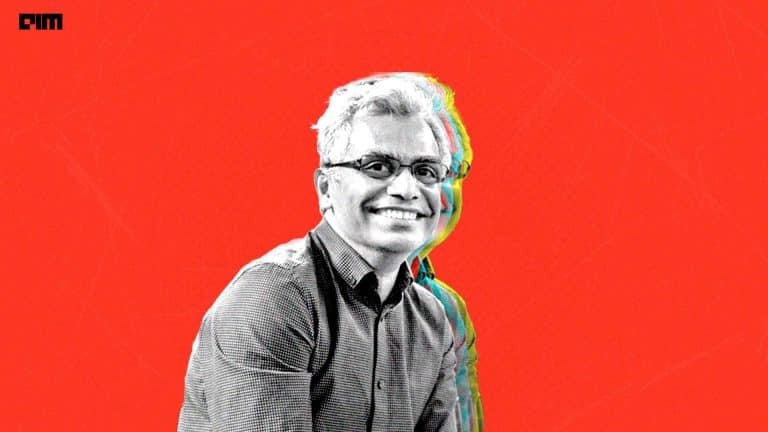|
Listen to this story
|
For any country that aspires to be an AI world leader, heavy investment in research is a pre-requisite. However, India’s research and development spending ranks among the lowest in the world. In 2022, India spent just 0.65% of its GDP on R&D, significantly lower than what the US or China spends, which is 2.9% and 2.2%, respectively.
Moreover, India also ranks much lower than US and China when it comes to AI for peer-reviewed journals, accounting for just 5.56% of AI journals published in 2021, according to Stanford University’s AI Index 2023 report. The report does, however, acknowledge India’s growing significance in the AI ecosystem, with India’s share increasing from just 1.3% in 2010. In comparison, China remains the clear leader with 39.78% share, with the US contributing 10.03% share.
“Although the US and China are ahead of India at present, the acceleration in our country is higher,” Prof Arnab Bhattacharya, dept of computer science & engineering, IIT Kanpur, told AIM. Now, the National Research Foundation (NRF) could help further accelerate the state of AI research in the country. The government’s decision to clear a bill enabling the setting up of the NRF with a massive corpus of INR 50,000 crore (USD 6 billion), has been welcomed by most researchers and academics. “By fostering a supportive and nurturing environment for AI research, we can capitalise on this momentum and potentially surpass the advanced nations within the next decade,” Prof Bhattacharya said.
Can NRF boost AI research?
Currently, one of the biggest challenges for AI researchers in the country is the allocation of funds. Expensive hardware like GPU/TPU and robot parts, often imported, limit affordability. Timely and adequate funds are crucial to address this challenge effectively. Hence, the government’s INR 50,000 crore allocation over five years could boost researchers’ finances. However, the distribution of funds will encompass all dimensions of research, leaving uncertainty about the specific allocation for AI researchers.
Brain drain is a significant concern within the Indian research ecosystem. Today, many Indian researchers are employed by the top AI labs in the world such as Google DeepMind, OpenAI, Microsoft etc. According to a Moneycontrol report, there are only around 500 active AI researchers in the country. Most researchers move out of the country to places offering better opportunities, both in terms of funding, resources and also attractive career prospects. The NRF could indirectly address this issue by streamlining funding channels for researchers, removing bureaucratic hurdles, and improving access to resources.
The NRF is indeed an affirmative step for fostering research in India, according to Prof Bhattacharya. “One core advantage it promises is its assimilation of the various scientific research funding bodies into one, including the social sciences, et al. This can be instrumental in streamlining funding processes and increasing accountability.”
Moreover, he believes there is a need for larger and more consolidated AI centres that bring together researchers and experts from different institutes and the NRF could be a step in the right direction. In most cases, individual researchers face several limitations to contribute significantly to path-breaking research. “The NRF can definitely help in tackling these challenges. For starters, it can take a lead in promoting and supporting large collaborative research centres, which would ensure the confluence of researchers with diverse expertise. This would help enrich collaborative research in the booming AI sector,” he said.
AI research needs a moonshot approach
Nonetheless, what AI research in India needs is a moonshot approach, according to Prof Amrutur Bharadwaj, research head and director, ARTPARK. In a previous interaction with AIM, discussing why an Indian equivalent of OpenAI is unlikely, Prof Bharadwaj said that to boost AI research, certain amounts of funds need to be allocated to the field and for a certain period of time. “I think it has to be driven by the government and they need to pump money into the ecosystem for a certain period of time.”
Given the wide scope of the NRF, it is unlikely that it could be a moonshot approach. However, the NRF aims to forge collaborations among academia, industry, and government departments and research institutions. In India, there is enough research happening in educational institutions and universities; however, they often find it difficult to actually translate that research into useful products or companies that can scale.
Perhaps, NRF can change this. By bringing together different stakeholders in AI, such as researchers, scientists, industry professionals, and academics, the NRF can foster a collaborative ecosystem for knowledge exchange, joint research projects, and technology transfer. But much of it will depend on NRF’s successful implementation, allocation of resources, and active participation from all stakeholders.
Problems with NRF
Even though the draft of the National Research Foundation Bill has not been made public yet, it has been made known that the NRF emulates the model of the National Science Foundation of the US. The NRF bill 2023 will replace the existing Science and Engineering Board (SERB) Act, 2008. But researchers have expressed concerns that replacing SERB could disrupt ongoing schemes and funding, potentially impacting the already precarious state of science granting.
Prof Bhattacharya raises another significant concern about the centralisation of the entire process by NRF. “Centralisation necessarily brings with it its own issues. Policies may become too dependent on the incumbent board/body that controls the agency, or NRF may turn out to be less favourable for a particular kind of field/project, for example AI, leaving little scope of improvement. If we can address such concerns comprehensively with due deliberations, then the road may be smoother.”
Moreover, out of the to-be-allocated INR 50,000 crore, only INR 14,000 crore will come from the government, whereas, the remaining INR 36,000 crores is expected to be raised from the private sector. Many feel this is a very ambitious target, which won’t be fulfilled, at least, in the first few years. India’s R&D investment from industry stands at 36.8%, contrasting with 80-90% in tech-heavy economies like Japan, South Korea or even Israel. Attracting corporate investors for the NRF may be challenging and it is not known how the government plans to source such a substantial sum from the industry players and other philanthropic sources.


















































































